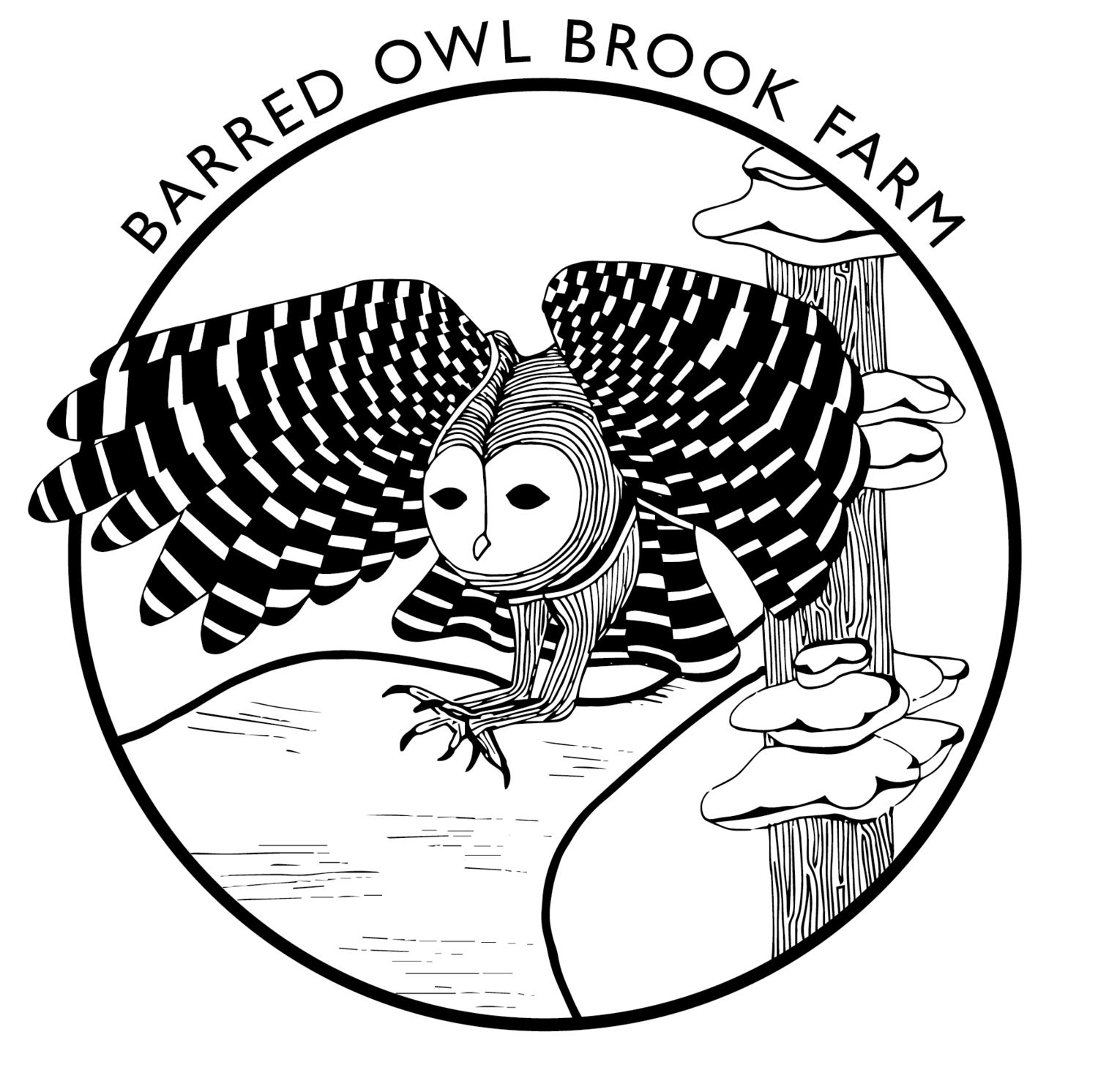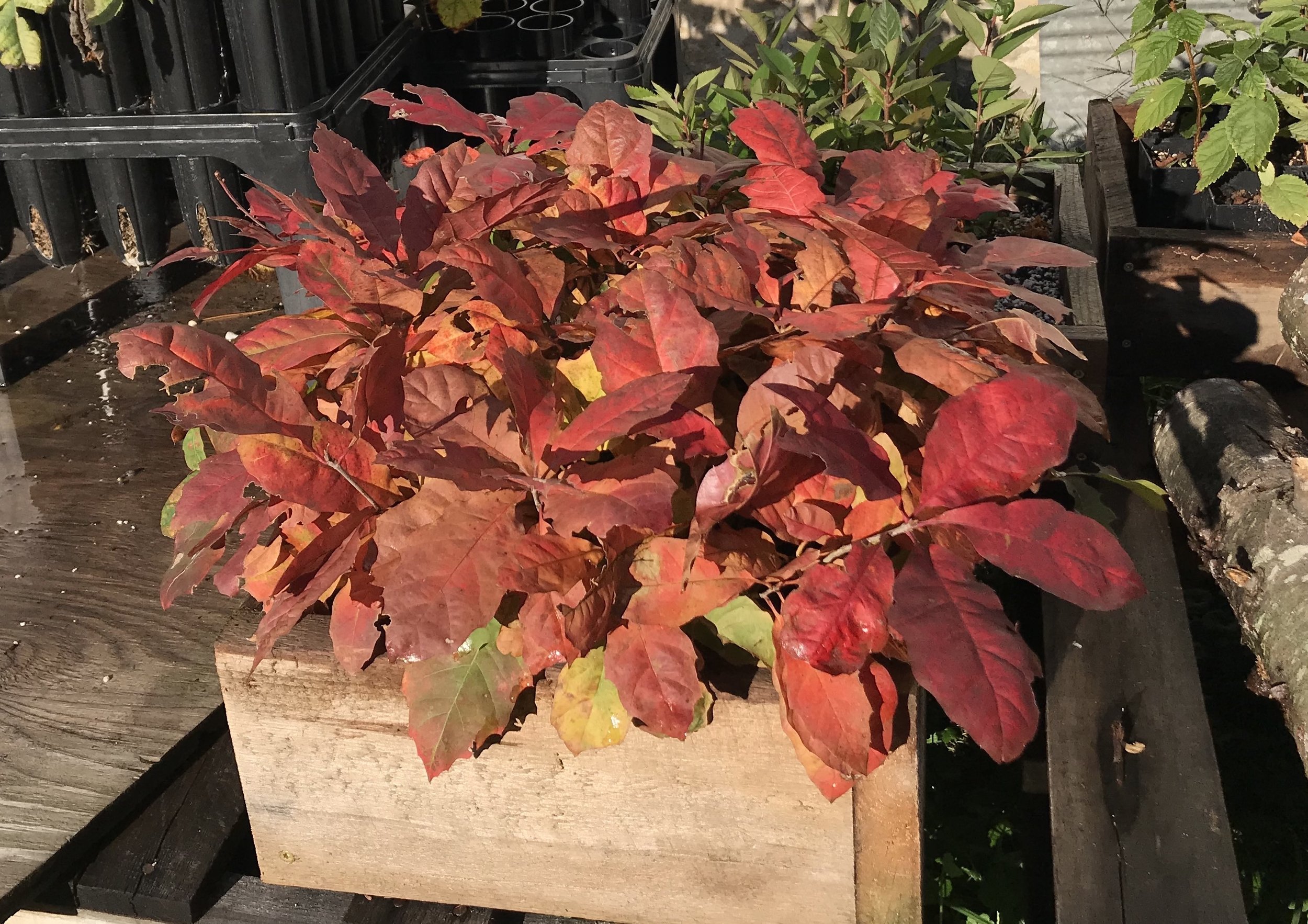Varieties we offer:
Webb Royce Swamp (WRS) White Oak - Seedlings grown from acorns we collected in the fall of 2020 at Webb Royce Swamp in Essex, NY. We suspect that this majestic mixed stand of White Oak (Q. alba) and Swamp White Oak (Q. bicolor) growing along a field edge was planted (or spared) by a previous farmer as the trees are relatively evenly spaced and appear to be similar in age. Given that these two species naturally hybridize, we consider these seedlings to be alba x bicolor hybrids and some individual seedlings should exhibit increased vigor and adaptability due to heterosis.
More info on Oak:
There are several species in the white oak group native to the Champlain Valley. Somewhat confusingly, one member of this group, Quercus alba, is commonly referred to as white oak. To muddy the waters further, many white oak species naturally hybridize with one another challenging identification efforts where populations overlap.
Compared to high-tannin red oak acorns, the acorns of lower-tannin white oak species are readily consumed and more easily digested by livestock and wildlife. However, white oak’s tendency to irregularly produce heavy acorn crops every 3-10 years coupled with the fact that it typically takes 20+ years before trees begin bearing makes them unreliable in terms of mast production, thus limiting their use as livestock feed in a silvopasture system.
If your goal is to maximize acorn production, consider more consistent and higher yielding varieties such as the hybrid Bur-Gambel Oak.















